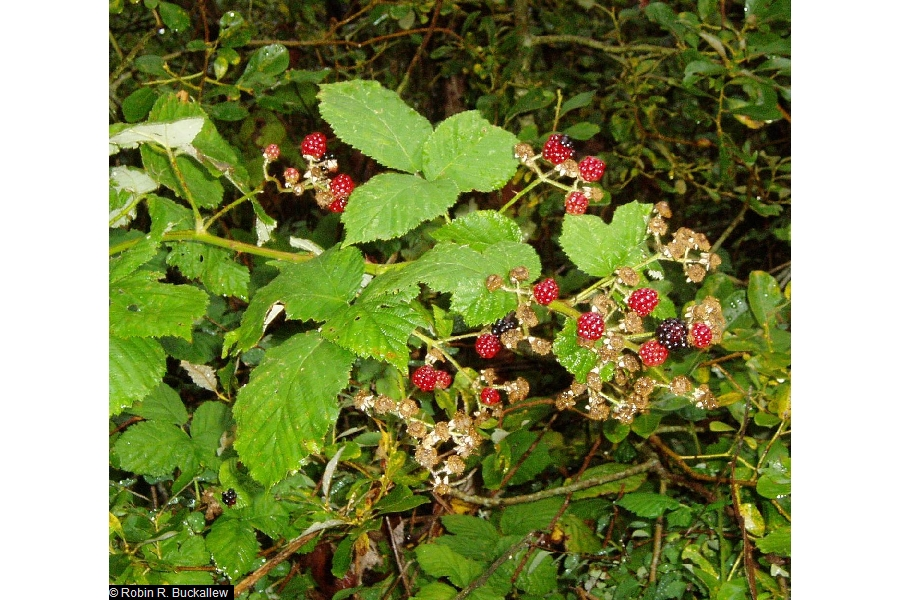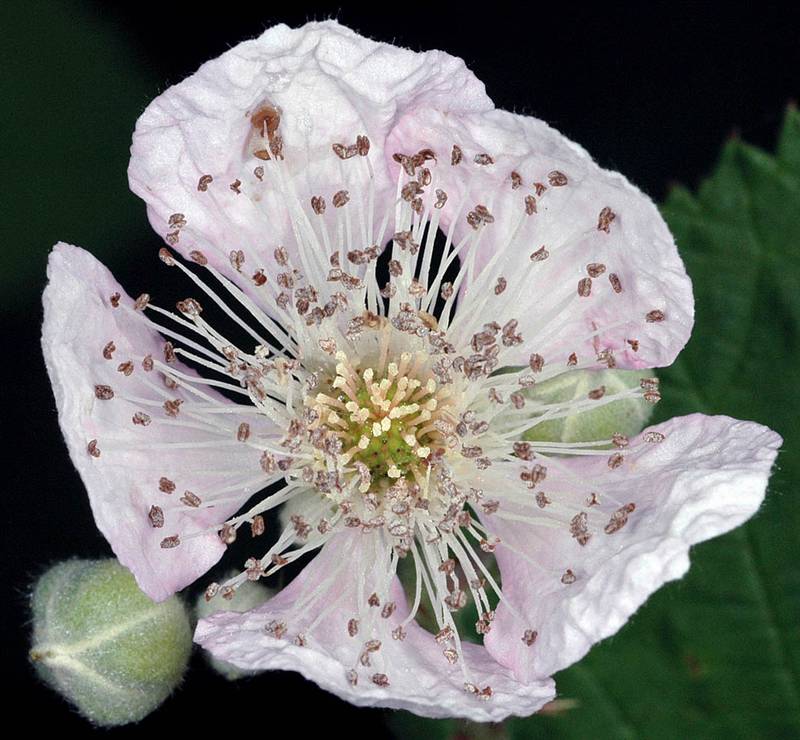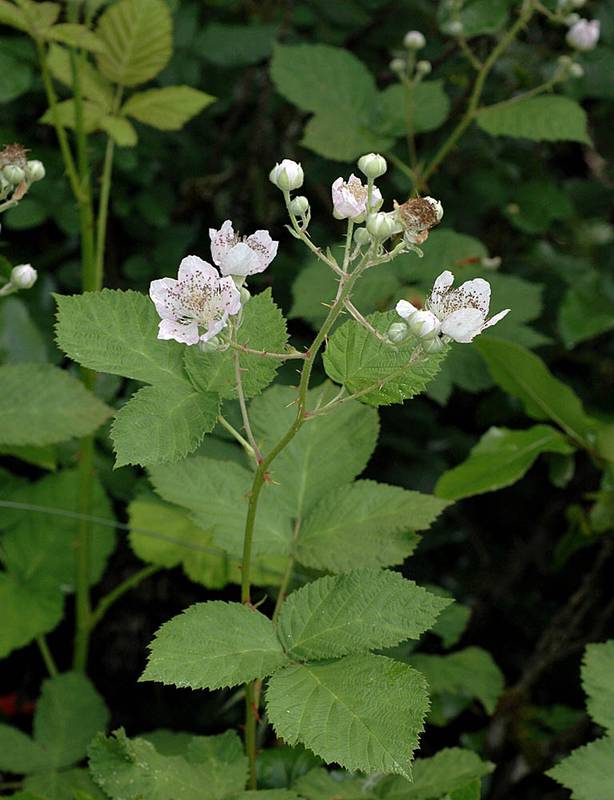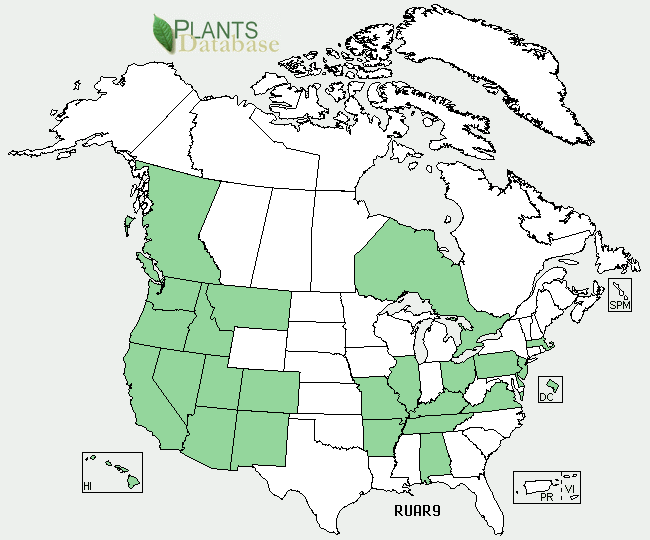Taxonomy: Kingdom - Plantae (plants). Subkingdom - Tracheobionta (vascular plants). Superdivision - Spermatophyta (seed plants). Division - Magnoliophyta (Flowering plants). Class - Magnoliopsida. Order - Rosales. Family - Rosaceae (Rose family). Genus -Rubus L. Species - Rubus armeniacus Focke
Ecology: Blackberries are generally most prevalent in early seral communities.In the Northeast, blackberries are aggressive invaders in old field communities. In the West, the introduced Himalayan blackberry commonly occurs as an early seral species in relatively open disturbed areas, such as along roadways or on abandoned homesteads. This blackberry also grows in certain riparian areas of California where it can apparently establish and persist despite periodic inundation by fresh or brackish water. This periodic flooding can produce relatively long-lived early seral communities conducive to the growth and spread of blackberries.



